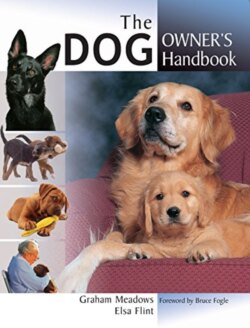Читать книгу The Dog Owner's Handbook - Graham Meadows - Страница 9
The process of domestication
ОглавлениеOver a period of time, wolves living close to humans became more relaxed and sociable towards them. Both dogs and humans discovered mutu al benefits from this loose association, which gradually became closer and led to the process of domestication. One of the key factors in this process was the wolf’s natural instinct to obey a pack leader, and the ability of humans to fulfil that role. Caught when very young, a wild wolf cub was likely to obey its human master and be tamed.
Patterns of dominant and submissive behaviour in wolves
| Dominant behaviour | Submissive behaviour | ||
|---|---|---|---|
| Dominant pose | Stiff, tall stance Ears up or forward Tail up or out | Submissive posture | Crouched posture Ears flat and tail tucked in Forehead smooth Pulling corners of mouth back (’grinning’) Licking or extruding the tongue Lowering and averting the gaze |
| Feet on | Dominant places its forelegs across the shoulders of a subordinate | Submissive arched posture | Back very arched and neck curved down and to the side. Head low, muzzle extended up Tail tucked in and ears flat Lifting hind leg while dropping to the ground, exposing the inguinal region |
| Muzzle pin | Dominant either bites or grabs subordinate’s muzzle, forcing it to the ground and keeping it there | Submissive sit | Sitting back, tucking chin into chest, sometimes pawing at the dominant and averting gaze |
| Stand across | Dominant stands stiffly across the forequarters of a prone subordinate |
This Canadian grey wolf displays typical dominance aggression as it protects its food.
Domestication was a gradual process that occurred during very similar time periods in Europe, Asia and North America – around 10–15,000 years ago. Initially humans used the sub-species of wolf that occurred in their particular area, but as humans migrated there came a great deal of interbreeding. Four subspecies of wolf had a particular influence on the development of our modern dog breeds:
º The Indian wolf probably gave rise to the ancestors of the Dingo and Asian Pariah Dog. The Dingo’s ancestors moved eastwards with human migration, and eventually became isolated in Australia.
º From the Chinese wolf evolved breeds such as the Pekingese and Chow Chow.
º The North American grey wolf was a major source of North American breeds, such as the Eskimo Dog and Alaskan Malamute.
º European wolves were probably involved in the development of breeds such as the various Shepherd Dogs, Spitz types and Terriers.
